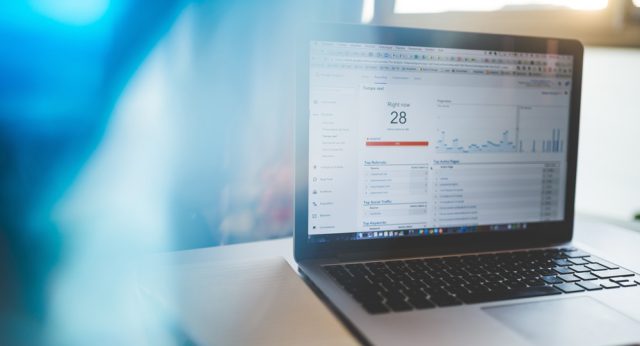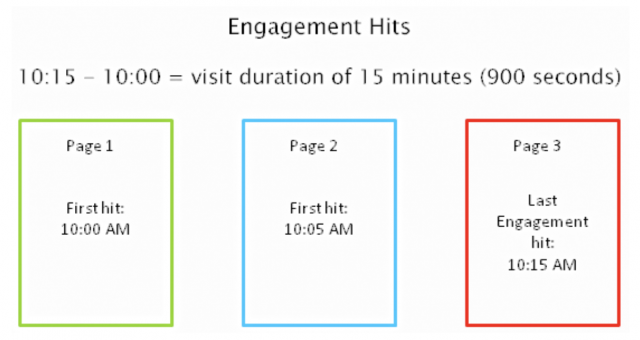
Now, more than ever, it’s crucial that businesses consider their online presence and equip themselves with an understanding of what their website metrics mean and how to leverage them.
Google Analytics is a commonly used analytics tool that lets business owners and marketers alike collect website data, gain insights about the website’s health, and derive consumer insights from the data.
To assess your website’s health, you can use Google Analytics built-in metrics. Metrics such as bounce rate, users, or sessions are an excellent starting point for learning about your website’s performance. That said, it is imperative that you do not mix up metrics and dimensions.
Dimensions are attributes of your data. For example, city names such as “Vancouver”, “Paris” or “New York” are dimensions because they tell you where your traffic is coming from. The city, or origin, is an attribute of your data.
Metrics are quantitative measurements. An example of a metric is ‘pages per session’, which tells you the number of pages a user browses through within your website when they visit. ‘Pages per session’ gives quantitative measurements for your data.
Now that we have defined the differences between metrics and dimensions, let’s dive into understanding the meaning of various Google Analytics metrics!
1. New Users
Google Analytics identifies a new user or a user who is on a website for the first time, by creating a unique identifier and a Google Analytics Client ID for the user. The identifier is stored in a user’s browser cookies to track each user’s visits. If a person hasn’t been to a website before, Google Analytics will create a new identifier for the person.
2. Returning Users
If a person visits a website using the same browser that they used the previous time they landed on the website, Google Analytics can detect the user’s existing identifier and Google Analytics Client ID. Google Analytics can determine that the person is a returning user since the person has an existing Google Analytics Client ID and identifier.
If a person re-visits a website using a different browser, Google Analytics can’t tell that the person has visited the website before. Google Analytics will consider the person as a new visitor and create a new Client ID for the person.
3. Sessions
A session refers to a series of interactions that a website user has within a website during their visit.. For example, if a person enters a website, browses through several pages, and then leaves the website, this series of actions is considered as one session.
A session also ends when there is inactivity for 30 minutes or at midnight. For example, if a person visits a website at 11:58pm and continues to browse the website past midnight, a new session starts at 12:00 am. If a person lands on a website, browses within it for a few minutes, and steps away from the computer for 30 minutes, their session ends when Google Analytics detects 30 minutes of inactivity.
4. Bounce Rate
A bounce is a single-page session on your website. A single-page session happens when a user opens a web page, such as the homepage or the about us page, and then exits the site without visiting another page. The bounce rate is the number of single-page sessions divided by the total number of all sessions. For example, if a website garners 100 sessions within a timeframe and 20 of the sessions are single-page sessions, the website’s bounce rate is 20%.
You can use the bounce rate to understand your website engagement. For example, if there is an increase in bounce rate, you may reckon that there are potential issues on your website and you can look into remedying the problems.
5. Average Session Duration
Average session duration in Google Analytics measures how much time, on average, visitors spent on a website as a whole. Google Analytics calculates the session duration by stamping the time (e.g. 10:00am) when a visitor lands on a website and the time of their last engagement on the website (e.g. 10:15am).

If a website visitor lands on a website at 10:00am and browses to Page A at 10:15am and reads Page A’s content until 10:20am and then leave the website, the session duration is 15 minutes because 10:15am is the time of the last engagement and that’s the time that Google Analytics uses to calculate the overall session duration.
6. Number of Sessions per User
Each time a user initiates a session, a session counter increases for that user. For example, if User A visits your website for the first time in January 2020, that user’s session count is 1. If the same user returns in February 2020, the session count is 2, and so on for each subsequent return. As mentioned above, Google Analytics determines whether different visits come from the same user by generating and injecting a Google Analytics client ID and identifier onto a user’s browser. If a person goes to the same website using the same browser, Google Analytics will consider that the sessions are coming from the same user. If the person uses different browsers or devices to visit the same website, Google Analytics will not be able to accurately determine that the different visits are from the same user.
Google Analytics is a powerful, free, and easy-to-use analytics tool that lets small business owners gain insights about their customers. Small business owners can use built-in metrics such as sessions, bounce rate, or returning users, to reckon their website performance, overall brand visibility, and other vital business and marketing metrics.
By understanding the definitions of the six major metrics above, you can use these metrics better to understand your website performance as well as consumer behaviors or patterns.
—
Posted on December 2, 2020
Guest blog post by RW Digital.
RW Digital is a digital marketing agency that leverages data and listens to tools to understand consumer passion points. We help optimize web experience and campaigns, determine the right use of technology, and enable creative messages to land the right way.

